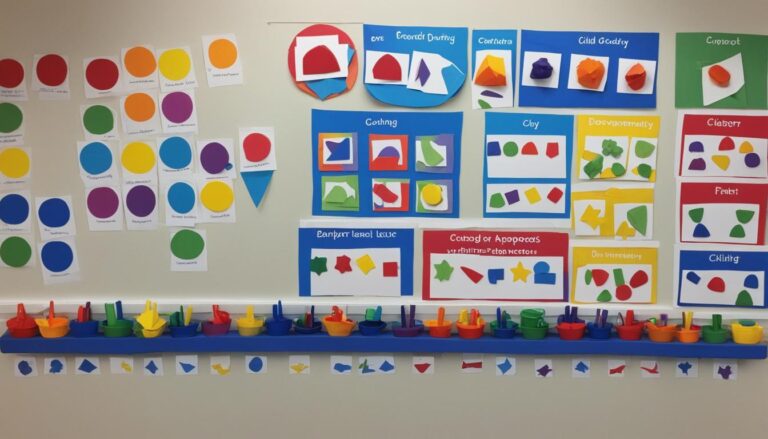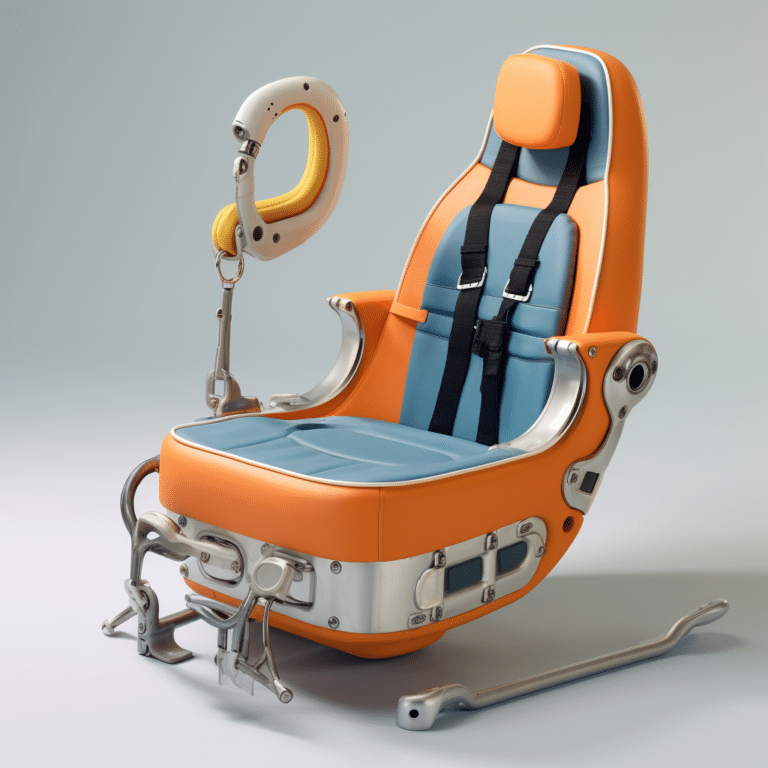Empowering Labor & Delivery Prepare Relax Communicate

Labor and Delivery, It can be overwhelming for expectant mums. Prepare well, both physically and mentally, for this life-altering event. Knowing the process, learning relaxation techniques and making a birth plan can give you confidence and reduce anxiety during labor.
Understand the labor stages. The 1st stage has regular contractions and cervix dilation. The 2nd stage is all about pushing and delivering the baby. Finally, the 3rd stage delivers the placenta. Knowing these steps makes you feel prepared and in control.
Learning relaxation techniques like deep breathing and visualizing can help with pain and stress. Practice these beforehand, so you know them when you need them most. Breathing helps regulate contractions and visualization creates a calm mental space.
Creating a birth plan is key. This document outlines your preferences on pain relief, interventions and specific requests. Chat to your healthcare provider to make sure it follows your birthing environment and get professional guidance.
Enroll in prenatal classes or join support groups to get information, emotional support and ask questions. These resources are helpful for pregnancy and the labor process.
Prepare for labor by knowing its stages, practicing relaxation techniques, making a birth plan tailored to you, and seeking support. This will give you the knowledge, confidence and tools for a great experience.
Understanding the Process of Labor and Delivery
Gaining knowledge of labor and delivery is essential for your journey to welcoming your little one. Here’s a guide to make your pathway easier:
- Knowledge is power. Learn about the stages of labor, from the start of contractions to delivery. Stay informed about what to expect in each phase.
- Early labor: Mild contractions will start and increase in frequency and intensity. Relax and focus on deep breathing for comfort.
- Active labor: Contractions get more intense and frequent as your cervix fully dilates. This might involve pushing when your body tells you it’s time.
- Delivery of the placenta: Your baby has arrived! You’ll still have contractions as your body expels the placenta.
Every labor experience is different. Emma, for example, recalls her journey with awe: “I was scared before, but when my daughter took her first breath, all the fear vanished. The strength and love surrounding me was incredible.”
Gaining understanding of labor and delivery equips you for this important moment in your life.
Preparing Physically for Labor
As you await labor, it’s essential to get your body ready! Here are some steps to help you prepare:
- Step 1: Exercise. Engage in physical activity regularly to strengthen muscles used in labor, like your pelvic floor.
- Step 2: Relax. Incorporate relaxation techniques like deep breathing or yoga. This helps you stay calm during contractions.
- Step 3: Eat Well. Eat a variety of fruits, veggies, proteins, grains, and healthy fats. Drink plenty of water too!
- Step 4: Get rest. Prioritize sleep by setting up a bedtime routine. Use pillows and pregnancy support belts for added comfort.
Consult with your healthcare provider about exercises that fit your needs. Every pregnancy is different, so listen to your body’s cues.
Fun Fact: A study from the American Journal of Obstetrics & Gynecology found that women who exercise regularly during pregnancy have shorter active labor periods!
Emotional Preparation
Emotional prep for labor and delivery is just as key as physical prep. Here are six points to think of:
- Get a supportive network of family and pals to offer encouragement and assurance.
- Attend childbirth education classes to learn about labor stages and pain managing techniques. This knowledge will help you and decrease your anxiety.
- Practice relaxation methods like deep breathing, meditation, or visualization to relax your mind and body. Find what works for you.
- Speak openly to your healthcare provider about any worries you have. They are there to guide you through this and answer any doubts.
- Make a birth plan to show your preferences and priorities. Being able to adapt is important, but having a plan can give you a sense of control.
- Take time to mentally prepare for the possibility of something unexpected happening during childbirth. Knowing that things may not go as planned can reduce your stress.
Plus, do activities that are good for you like taking walks, prenatal yoga, or soothing baths for emotional health during pregnancy.
Pro Tip: Emotional prep doesn’t just stop at birth; it includes the postpartum period too. Get educated about postpartum emotions and ask for help if needed.
Practical Preparations
Practical prep for labor and delivery is essential for an easy process. Follow this step-by-step guide to get ready:
- Arrange transport to hospital or birthing center. Have backup options in case of delay.
- Pack your bag with essentials like clothing, toiletries, and personal items. Don’t forget IDs, insurance info, and birth plan.
- Set up your support system. Inform your loved ones and discuss roles during labor and delivery. Consider who you want for emotional support.
- Prepare your home. Clean and organize space, stock up groceries and supplies, and setup a cozy area for baby and you.
- Educate yourself. Attend childbirth classes or workshops for birthing techniques, relaxation methods, and pain management.
- Create a birth plan. Discuss with provider what kind of birth experience you desire. Write down preferences regarding pain relief, interventions, skin-to-skin contact, etc. Hire a doula if desired.
COVID-19 guidelines may affect labor and delivery procedures. Restrictions on visitors, masks during labor, or breastfeeding may be in place.
Mary Jackson in the early 1900s is an example of the importance of practical preparations. She was prepared for her journey to hospital, packed her bag and had a trusted support system. Her preparedness enabled a safe and comfortable delivery.
By following these practical preparations, you can approach labor and delivery confidently. Every birth experience is unique, so trust your instincts and stay informed and prepared.
Pain Management Techniques
Pain during labor and delivery is a worry for many pregnant mamas. Here are 3 successful techniques to handle the distress:
- Breathing exercises: Doing deep breathing can help relax the body and reduce pain.
- Relaxation techniques: Such as meditation, visualization, and massage can lessen tension and take away from pain.
- Medical interventions: Medicines like epidurals or nitrous oxide can be used to reduce pain during labor.
Also, it’s important to remember that each woman’s experience with pain management may differ depending on their personal preferences and labor situations.
One woman talked about her experience of using hypnobirthing techniques during labor. By focusing on calming and doing breathing exercises, she was able to manage her discomfort while staying in control throughout the process. This shows the effectiveness of alternate pain management techniques for some expectant mothers.
To sum up, there are numerous methods available to aid with pain during labor and delivery. From breathing exercises to medical interventions, every woman should research different options and find what works best for her unique condition.
Communication with Healthcare Providers
Communicating effectively with healthcare providers is an absolute must during pregnancy and labor. It ensures that you get the right support and guidance for this life-changing journey. Here are some key points to keep in mind:
- Set up regular communication: Stay in contact with your healthcare provider regularly, through phone calls, emails or face-to-face meetings.
- Speak up and ask questions: Don’t be afraid to voice your doubts or worries about labor and delivery. Ask for more info on procedures, options and potential risks.
- Be honest: Tell the truth about your medical history, symptoms and any changes. This will help healthcare providers make the best decisions for you.
- Second opinion: If you’re uncertain about a recommended course of action, don’t hesitate to get another professional’s perspective. It’s essential to feel comfortable with the care you’re receiving.
- Birth plan: Talk about your labor and delivery preferences with your healthcare team. This includes pain management, birthing positions, interventions and cultural/religious considerations.
- Monitor progress: Keep up with your pregnancy progress by talking to your healthcare provider. This helps to ensure that both you and your baby remain healthy during labor and delivery.
It’s important to remember that communication is a two-way street. Both sides should actively listen and talk respectfully about your needs as an expectant parent.
Keep in mind that every pregnancy is different. Your experience could be different from others. So it’s necessary to stay in touch with your healthcare providers throughout this one-of-a-kind journey.
In the past, there have been cases of miscommunication between expectant parents and their healthcare providers, leading to unfavorable results. By speaking openly and seeking clarification when needed, you and your healthcare provider can make decisions together. The aim is to make sure you and your baby receive the best possible care during labor and delivery.
Preparing Your Home for Postpartum
Ready your home for the postpartum period with these useful tips!
- Stock up on baby essentials
- Create restful spaces
- Sanitize frequently
- Organize baby gear
- Set up supportive systems
- Additionally, keep snacks close by
- Don’t be afraid to ask for help
- Finally, consider hiring a professional cleaning service for a fresh and tidy home environment
Final Weeks of Pregnancy
As your due date nears, you may want to know how to ready yourself for pregnancy’s final stretch. Here are a few tips:
- Keep active: Exercise lightly, like walking or prenatal yoga. This will help with labor and delivery.
- Rest and relax: Take breaks and use deep breathing to alleviate stress.
- Pack your hospital bag: Get your clothing, toiletries, and papers in order for hospital time.
- Plan for getting there: Organize transportation. Have a car seat ready if needed.
- Discuss your birth plan: Speak to your healthcare provider about labor and delivery preferences.
- Learn the signs of labor: Know contractions and membrane rupture, so you can contact your doctor when the time comes.
Besides all these, maintain good health. Eat a nutrient-rich diet and drink lots of water.
These last weeks, practice good hygiene and keep an eye out for changes and new symptoms. Discuss your concerns and questions with your healthcare provider for appropriate care.
By following these steps and taking proper care of yourself, you’ll be ready for the journey ahead. Be mindful that each pregnancy is unique. Listen to your body and ask a professional when in doubt.
Conclusion
To have a smooth and comfy labor, careful prep is essential. One key part is learning about the process to ease any concerns. Attend childbirth classes to find out about labor stages, pain management, and breathing exercises. These will give you knowledge and the power to make decisions during labor.
Maintaining a healthy lifestyle in pregnancy is essential too. Exercise, good nutrition, and rest support your body for childbirth. Plus, build a strong support system. Be with knowledgeable people or hire a doula for emotional aid. Talk to your healthcare provider about your birth plan.
Practicing relaxation techniques like meditation or visualization helps manage pain and calms you. Comfort measures like hot showers, massage, and birth balls can help too. Remember, each woman’s labor experience is unique. Have realistic expectations to be ready for anything. Trusting yourself and staying positive will give you confidence.
So, seek knowledge, take care of yourself, build a support network, practice relaxation, and embrace the unpredictable nature of childbirth to have an inspiring birth experience!
Frequently Asked Questions
Q: When should I start preparing for labor and delivery?
A: It is recommended to start preparing for labor and delivery around the 32-36 week mark of your pregnancy.
Q: What exercises should I do to prepare for labor?
A: Prenatal exercises such as walking, swimming, yoga, and pelvic floor exercises can help strengthen your body for labor.
Q: How can I mentally prepare for labor and delivery?
A: Taking childbirth education classes, learning relaxation techniques, and creating a birth plan can help you mentally prepare for labor.
Q: Are there any breathing techniques to use during labor?
A: Yes, deep breathing, patterned breathing, and slow breathing can help manage pain and enhance relaxation during labor.
Q: What should I pack in my hospital bag for labor and delivery?
A: Some essentials to pack include comfortable clothing, toiletries, nursing bras, important documents, and items for the baby.
Q: Can I have a birth partner or support person with me during labor?
A: Yes, having a birth partner or support person can provide emotional support and assist you during labor and delivery.







